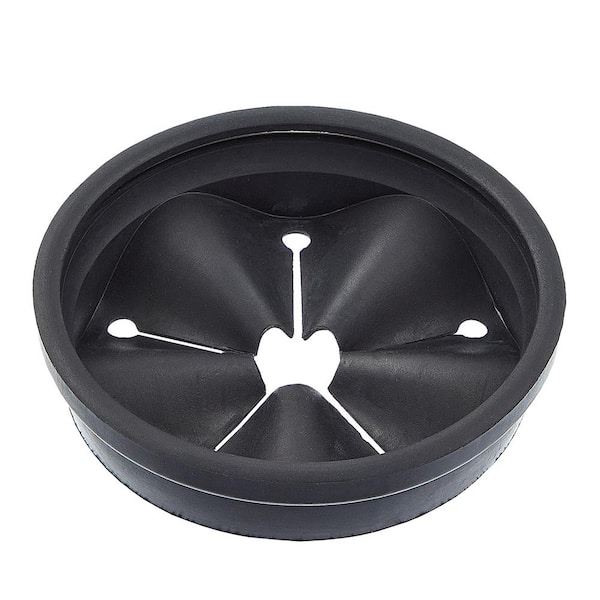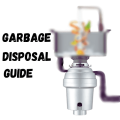Garbage disposers are essential kitchen appliances. They help manage food waste efficiently. Understanding their parts can help in maintenance and repair. This guide will take you through various garbage disposer parts.
Introduction to Garbage Disposers
A garbage disposer, or garbage disposal, is installed under the kitchen sink. It grinds food waste into small pieces. This makes it easier to wash down the drain. Knowing its parts is crucial for troubleshooting and maintenance.
Main Parts of a Garbage Disposer
Let’s explore the main components of a garbage disposer:
- Housing
- Flywheel and Shredder Ring
- Motor
- Impellers
- Splash Guard
- Sink Flange
- Reset Button
- Plumbing Connections
1. Housing
The housing is the outer shell of the disposer. It protects internal components. The housing is usually made of stainless steel or plastic. It is durable and resists corrosion. The housing also contains the grinding chamber.
2. Flywheel And Shredder Ring
The flywheel is a flat disk inside the disposer. It spins when the disposer is on. Attached to the flywheel is the shredder ring. The shredder ring has sharp edges. It grinds food waste into small particles. These particles can then flow easily down the drain.
3. Motor
The motor is the powerhouse of the disposer. It drives the flywheel. Motors vary in power, usually between 1/3 to 1 horsepower. A more powerful motor can handle tougher food waste.
4. Impellers
Impellers are metal blades on the flywheel. They help push food waste against the shredder ring. This action grinds the food waste into tiny pieces. Impellers are usually made of stainless steel for durability.
5. Splash Guard
The splash guard is a rubber or plastic piece. It fits into the sink drain. Its main job is to prevent food particles and water from splashing out. It also helps reduce noise from the disposer.
6. Sink Flange
The sink flange connects the disposer to the sink. It is usually made of stainless steel or plastic. The sink flange creates a tight seal. This prevents leaks and keeps the disposer securely in place.
7. Reset Button
The reset button is a safety feature. It is located at the bottom of the disposer. If the disposer jams or overheats, the reset button will trip. Pressing the reset button will restart the disposer.
8. Plumbing Connections
Plumbing connections are essential for the disposer to function. These include the discharge tube and mounting assembly. The discharge tube carries ground food waste to the drain pipe. The mounting assembly secures the disposer to the sink.
Common Problems and Solutions
Understanding garbage disposer parts can help fix common issues. Here are some problems and their solutions:
| Problem | Possible Cause | Solution |
|---|---|---|
| Disposer Won’t Turn On | Tripped Reset Button | Press the Reset Button |
| Disposer Hums but Doesn’t Grind | Jammed Flywheel | Use an Allen Wrench to Free the Flywheel |
| Leaking from Bottom | Damaged Housing | Replace the Disposer |
| Slow Drainage | Clogged Discharge Tube | Clean the Discharge Tube |

Credit: www.homedepot.com
Maintenance Tips
Regular maintenance can extend the life of your garbage disposer. Follow these tips to keep your disposer in good shape:
- Run Cold Water: Always run cold water while using the disposer. This helps solidify any grease, making it easier to grind.
- Avoid Hard Items: Do not put hard items like bones or fruit pits in the disposer. They can damage the shredder ring and impellers.
- Clean Regularly: Clean the disposer regularly to prevent odors. Use a mixture of baking soda and vinegar. Let it sit for a few minutes, then rinse with water.
- Use Ice Cubes: Grinding ice cubes can help clean the shredder ring. It also sharpens the impellers.
- Avoid Chemical Cleaners: Do not use chemical drain cleaners. They can damage the disposer parts.
Frequently Asked Questions
What Are The Common Garbage Disposer Parts?
Common parts include the motor, grinding chamber, and flywheel. These components are essential for proper disposal functionality.
How Often Should You Replace Disposer Parts?
Replace worn or damaged parts immediately. Regular maintenance checks every 6-12 months help ensure optimal performance.
Can You Repair A Garbage Disposer Yourself?
Yes, basic repairs like unclogging or replacing minor parts are possible. Always turn off the power first.
Where To Buy Garbage Disposer Parts?
Purchase parts from hardware stores, appliance shops, or online retailers. Ensure compatibility with your disposer model.
Conclusion
Knowing the parts of a garbage disposer is crucial. It helps in maintenance and troubleshooting. Regular care can extend the life of your disposer. Always follow safety guidelines when handling the disposer.
:max_bytes(150000):strip_icc()/gar_disp_expl_view-640-56a4a2d25f9b58b7d0d7effe.jpg)
Credit: www.thespruce.com
FAQs
Here are some common questions about garbage disposer parts:
What Should I Do If My Disposer Is Leaking?
Check the sink flange and plumbing connections. Tighten any loose connections. If the housing is damaged, you may need to replace the disposer.
Can I Put All Food Waste In The Disposer?
No, avoid hard items like bones and fruit pits. Also, avoid fibrous foods like celery and corn husks. They can clog the disposer.
How Often Should I Clean My Disposer?
Clean your disposer at least once a week. Use baking soda and vinegar for best results.
What Should I Do If The Reset Button Doesn’t Work?
Check the power supply. Make sure the disposer is plugged in. If the problem persists, consult a professional.
Can I Use Hot Water With My Disposer?
It’s best to use cold water. Hot water can melt grease, which can clog the pipes.
Understanding your garbage disposer can save you time and money. Regular maintenance ensures it works efficiently. Follow these tips for a trouble-free kitchen experience.
